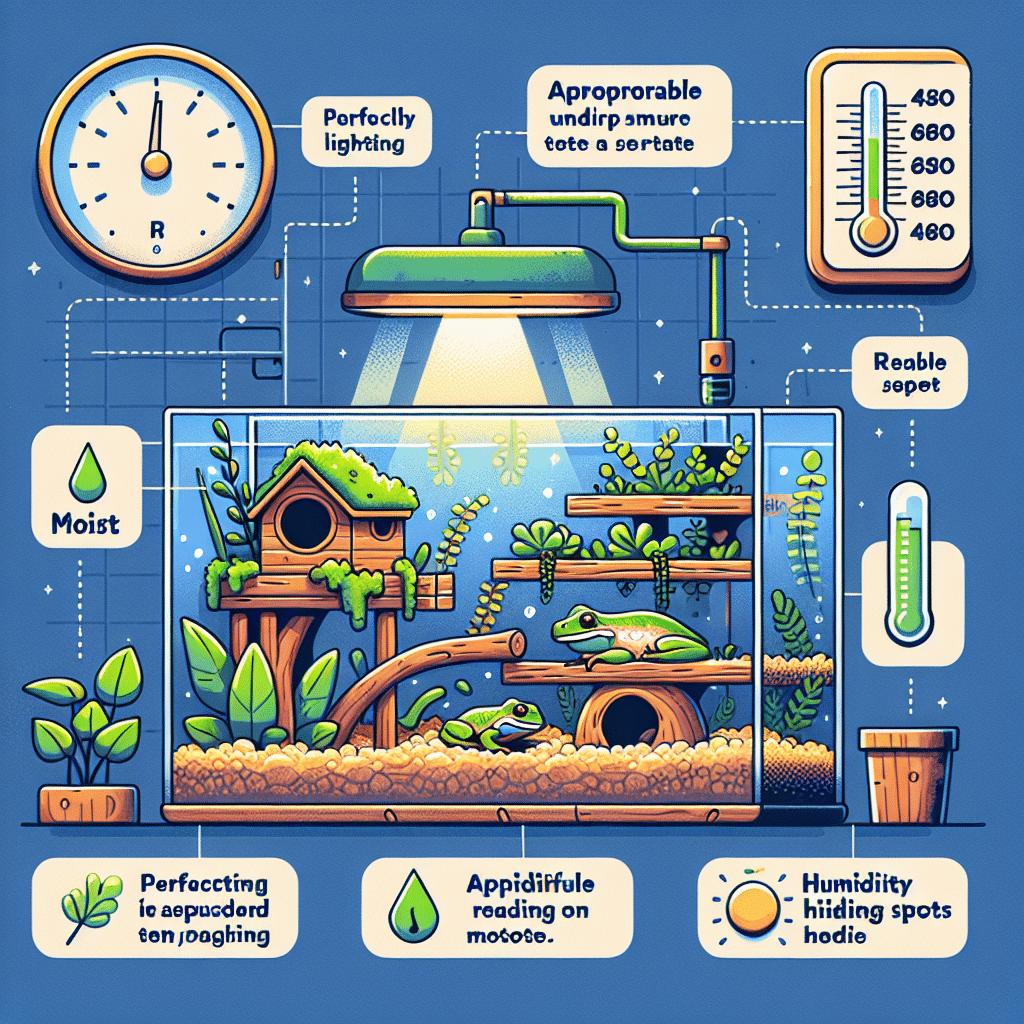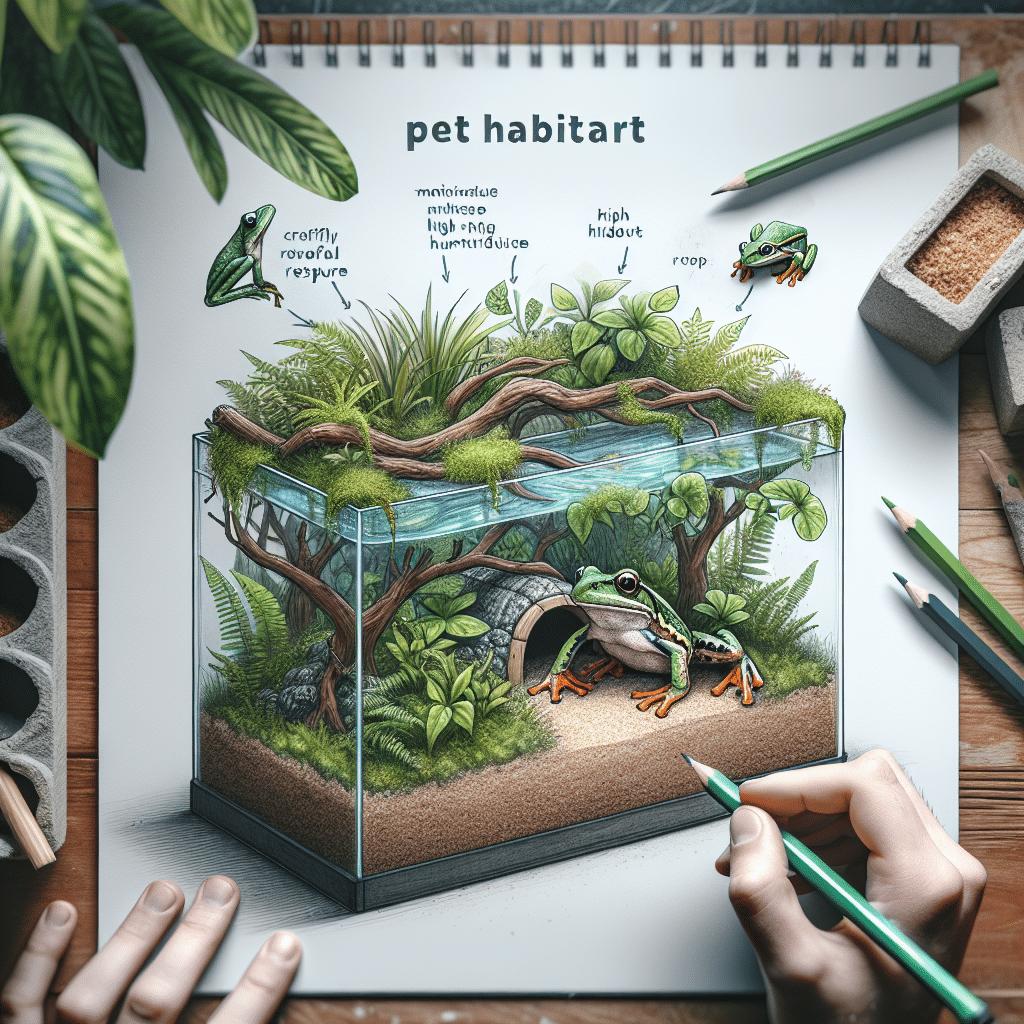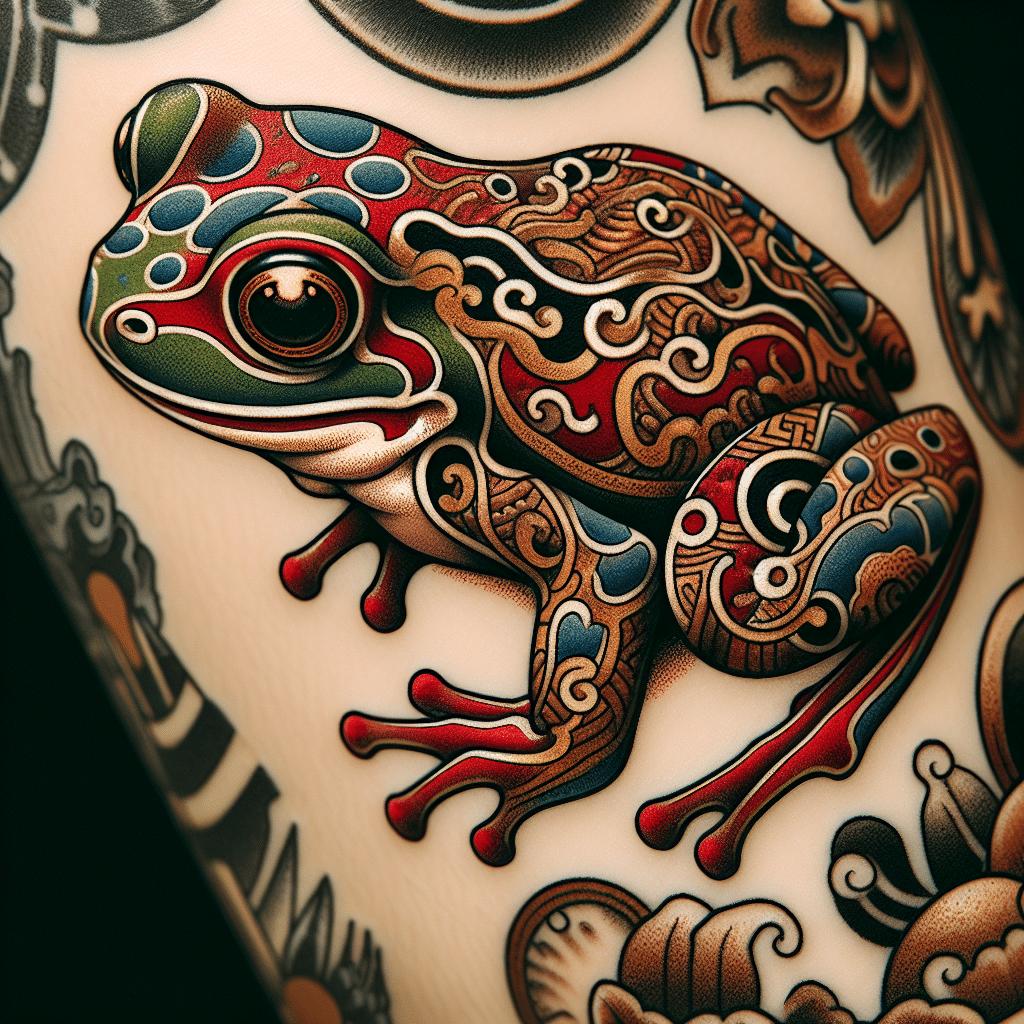Do you have a frog as a pet? Well then, you must know how important it is to create a cozy home for your little amphibious friend. In this article, we will guide you through the process of setting up the perfect frog tank. We will tell you everything you need to know about providing the right environment for your frog to live happily and thrive. From selecting the right tank and choosing the best substrate, to setting up a comfortable temperature and creating the perfect lighting, we’ve got it all covered. So, let’s jump right in and create the ultimate habitat for your frog!

Understanding Your Frog’s Natural Habitat
Identifying your frog’s species
To create the perfect habitat for your frog, it’s important to first identify its species. Different species of frogs have different habitat requirements, so knowing what type of frog you have is crucial. You can consult a field guide or get help from an expert at a pet store to determine the species of your frog.
Researching natural environments
Once you know your frog’s species, it’s time to research its natural environment. Frogs come from various habitats, such as forests, grasslands, or wetlands. By understanding the natural environment of your frog, you can recreate a similar setting in its tank and ensure its overall well-being.
Climate and weather conditions in their natural habitat
Understanding the climate and weather conditions of your frog’s natural habitat is essential for recreating a suitable environment. Research the temperature range, humidity levels, and if the area experiences seasonal changes. This will help you replicate the conditions needed for your frog’s overall health and happiness.
Selecting the Right Tank
Deciding on the tank size according to frog species
Different frog species have different space requirements. Larger frogs need larger tanks, while smaller ones can do well in smaller enclosures. Make sure to research the specific needs of your frog species and select a tank size accordingly. Giving your frog enough space to move around and explore is vital for its overall well-being.
Types of tanks to consider
There are various types of tanks available for housing frogs. You can choose between glass tanks or plastic enclosures, depending on your preference and the needs of your frog. Ensure that the tank is sturdy and secure, with no gaps or openings that your frog could escape from.
Availability of ventilation and securing the tank accordingly
Proper ventilation is essential to maintain air circulation within the tank. Make sure the tank you choose has ventilation holes or a mesh lid to allow fresh air to enter. It’s also important to ensure that the tank is secure and escape-proof, as frogs are notorious for being skilled escape artists.

Proper Placement of The Tank
Choosing a quiet location
Frogs are sensitive to noise and vibrations, so it’s crucial to choose a quiet location for their tank. Avoid placing the tank in areas with frequent loud noises or heavy foot traffic. This will help keep your frog stress-free and ensure it gets the undisturbed rest it needs.
Maintaining the right temperature
Maintaining the correct temperature is vital for your frog’s health. Different frog species have different temperature requirements, so it’s essential to research and provide the optimal temperature range for your specific frog. Using a thermometer and a heat source, such as a heat lamp or heating pad, can help you keep the tank at the right temperature.
Avoiding direct sunlight or drafts
Direct sunlight can quickly heat up the tank and cause temperature fluctuations, which can be harmful to your frog. It’s best to avoid placing the tank in direct sunlight or near windows. Similarly, drafts can cause temperature drops and make your frog uncomfortable. Keep the tank away from drafts to ensure a stable and comfortable environment for your amphibious friend.
Setting Up the Substrate
Necessity of substrate for frogs
Substrate refers to the material that lines the bottom of the tank. It’s necessary for frogs as it mimics their natural habitat and provides them with a comfortable surface to walk and rest on. Substrate also helps maintain humidity levels within the tank.
Different types of substrates
There are various types of substrates you can choose from, such as coconut fiber, moss, or bark chips. Research the needs of your frog species and select a substrate that best replicates its natural environment. Ensure that the substrate is clean and free from any chemicals or toxins.
Changing and cleaning the substrate
Regularly changing and cleaning the substrate is essential for maintaining a healthy tank environment. Remove any waste, uneaten food, or debris from the substrate regularly. Depending on the substrate type, you may need to replace it entirely or simply spot clean as needed.

Arranging Water Facility
Importance of water for amphibians
Water is crucial for the survival of amphibians, including frogs. It provides them with a source of hydration and facilitates their daily activities, such as bathing and swimming. Ensuring your frog has access to clean water is vital for its overall well-being.
Creating a bathing or swimming area
Incorporate a shallow water dish or container into the tank to provide your frog with a place to bathe and swim. The dish should be big enough for your frog to comfortably soak in, but not too deep that it poses a drowning risk. Use dechlorinated water, as chlorine can be harmful to amphibians.
Regularly changing and treating water
Regularly changing the water in the dish is important to maintain cleanliness. Depending on the size of the water dish and the number of frogs you have, change the water every few days or when it becomes dirty. Treat the new water with a water conditioner to neutralize any harmful chemicals or pollutants.
Sustainability of Natural Vegetation
Incorporating live plants
Adding live plants to the tank not only enhances its aesthetic appeal but also provides a natural and stimulating environment for your frog. Live plants contribute to the overall well-being of your frog by helping maintain humidity, provide hiding spots, and improve air quality.
Choosing the appropriate plants
When selecting plants for your frog’s tank, ensure that they are non-toxic and safe for amphibians. Research the specific needs of your frog species and choose plants that can thrive in the tank environment. Avoid using plants that require pesticides or fertilizers, as these can be harmful to your frog.
Setting up climbing branches
Climbing branches or driftwood can offer additional perching areas for your frog. Amphibians, including frogs, often enjoy climbing and basking on elevated surfaces. The branches should be securely anchored in the tank to prevent them from falling or causing any harm to your frog.
Putting Up Hiding or Breeding Spots
Importance of privacy for frogs
Frogs require privacy to feel secure and reduce stress levels. Providing hiding spots creates a sense of security for your frog, allowing it to retreat and rest when needed. Hiding spots also serve as breeding spots for certain frog species, so they are essential if you plan to breed your frogs.
Options for hiding places
Hiding spots can be created using various materials, such as caves, hollow logs, or overturned pots. These items should be securely placed in the tank and provide enough space for your frog to comfortably hide within. Ensure the hiding spots are easily accessible but also offer a sense of seclusion.
Provisions for breeding if necessary
If you plan to breed your frogs, you may need to provide additional breeding spots. This can include shallow water areas with aquatic plants or floating platforms for the female frog to lay her eggs on. Research the specific breeding requirements of your frog species and provide the necessary provisions.
Incorporating Various Decorations
Providing an attractive environment
Decorations add visual appeal to the tank and create an enriching environment for your frog. This can include items like rocks, logs, or artificial plants. However, it’s essential to ensure that the decorations are safe and do not pose a choking hazard or contain any toxic substances.
Choosing safe and non-toxic decorations
Always choose decorations that are specifically designed for use in frog tanks. Avoid using items sourced from the outdoors, as they could introduce harmful bacteria or parasites to the tank. Thoroughly clean and rinse any decorations before placing them in the tank to ensure they are safe for your frog.
Cleaning and replacing decorations as needed
Regularly inspect the decorations in the tank for any signs of wear, damage, or contamination. Clean any dirty or soiled decorations using a mild soap or aquarium-safe cleanser. If a decoration becomes unsafe or unsightly, replace it promptly to maintain a healthy and stimulating environment for your frog.
Providing Proper Lighting Conditions
Importance of the light cycle
Lighting plays a crucial role in maintaining your frog’s biological clock and overall health. Mimicking natural light cycles helps regulate their activity, feeding, and breeding patterns. Make sure to provide both a day and night cycle in the tank for your frog to experience the right balance.
Choosing the right kind of light
Use full-spectrum lights or UVB lights to provide the necessary UV rays for your frog. These lights help with vitamin D synthesis and calcium absorption, which are vital for your frog’s bone development and overall health. Consult a reptile or amphibian expert to determine the appropriate lighting for your specific frog species.
Setting up a heat source when needed
In addition to lighting, some frogs require additional heat sources to maintain optimal body temperature. This is especially important if your frog’s natural habitat has warmer or colder temperature ranges than your home environment. Use a heat lamp or heating pad, carefully positioned in the tank, to provide the required heat.
Monitoring and Regular Upkeeping
Tracking your frog’s behavior for signs of stress
Regularly observe your frog’s behavior to ensure it is healthy and not displaying any signs of stress. Look for changes in eating habits, abnormal skin coloration, or signs of illness. If you notice any concerning behavior, consult a veterinarian who specializes in exotic pets or amphibians.
Adjustments to improve the habitat
Keep track of any changes you make to the habitat and monitor how your frog responds. If you notice that your frog seems uncomfortable or stressed, make appropriate adjustments. This could involve altering temperature, humidity levels, or even changing the overall setup of the tank.
Routine checks and preventative maintenance
Perform routine checks of the tank to ensure everything is functioning properly. Check the temperature, humidity levels, and water quality regularly. Maintain a cleaning schedule for the tank, substrate, and decorations to prevent the build-up of harmful bacteria or toxins. Regular maintenance is vital for the overall health and longevity of your frog.
In conclusion, creating the perfect habitat for your frog requires careful consideration of its species, natural environment, and specific needs. By understanding these factors and following the guidelines discussed, you can provide a safe, comfortable, and stimulating environment for your amphibious friend. Remember, a healthy and happy frog is a joy to observe and care for.



